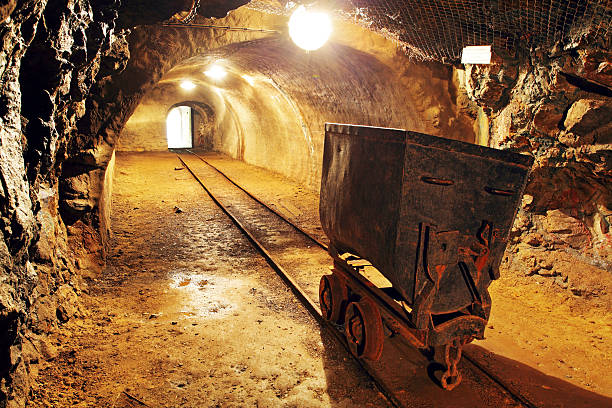Gold is a very soft, shiny metal. It is an extremely important material due to its physical properties. It possesses almost unlimited malleability and can be hammered into an extremely thin, almost transparent membrane or wire that is thinner than a human hair. Gold also has various useful physical properties, for example it is a good conductor of heat and electricity and melts at the relatively high temperature of 1,064°C (1,947°F). Its density is 19.3 grams per cubic centimeter. The only metals heavier than gold are those found in the platinum group of metals. Only virgin gold has any commercial value. This is found within crystal grains of various sizes ranging from those invisible to the naked eye to larger nuggets.
Commercial gold is found in two different types of deposit. The most important is in ore and the least important is within placer or alluvial deposits. Gold ore deposits were originally formed by geological processes when the earth’s crust was first formed and they are typically located in mountainous regions. They are generally located deep within the earth and are extracted by mining. Placer or alluvial deposits are created as a result of wind, water and other natural forces of erosion that work on gold ores and are found in river beds, some of which are dry. Placer deposits are generally found closer to, or on the surface of, the earth and are more easily accessible.
Due to its easier accessibility gold was originally extracted from placer deposits as they are easier to access and do not require expensive equipment or complicated processes. In the 19th century the Californian, Australian and Alaskan gold rushes were centered on placer deposits as were most of the rich discoveries found in Russia in the 20th century. In the beginning of the 21st century most gold was extracted from ore deposits.
According to estimates, 90 percent of the world production of gold in 1848-1875 came from placer deposits. But in 1929 this percentage dropped to 8 percent in the capitalist world, and in 1971 to 2 percent. As of 2011, almost all gold is extracted from conglomerates in the Republic of South Africa and from primary deposits in various parts of the world. In recent years the percentage of gold extracted as a byproduct of silver, copper, uranium and other ores has increased considerably.
Gold panning is a way of separating gold out from bits of stone or sand, often from a river bed. It is done by hand, using wide, shallow pans that are filled with sand and gravel that may contain gold. The pan is dipped into water and shaken, which sieves the sand and gravel and separates the gold. The gold settles at the bottom of the pan because it is more dense that the gravel or sand. This type of mining is appropriate in placer deposits.
Sluicing involves creating artificial slow spots in a river where it is suspected that gold might be found. The creation of the slow spots removes gold deposits from the water as they drop out of suspension due to their relative weight. At the slow spots a sluice box is positioned, where the gold-bearing material sits until retrieved.
Dredging is a more commercial process than the previous two methods. Small machines float on top of a river with a sluice box underneath which suctions water, hopefully with gold suspended within it, through it in order to collect the gold.
Gold from ore can be mined through a cyanide solution. A cyanide solution is mixed with ground rock which has gold within it. The cyanide bonds chemically with the gold to form gold cyanide. Zinc is then added to the solution to displace the gold. It reacts with the gold cyanide to form Zinc cyanide, with the pure gold being left as a by-product of the reaction. The gold left over is normally in the form of a sludge which is then taken to a refinery for final processing into 99.99 percent pure metal.



